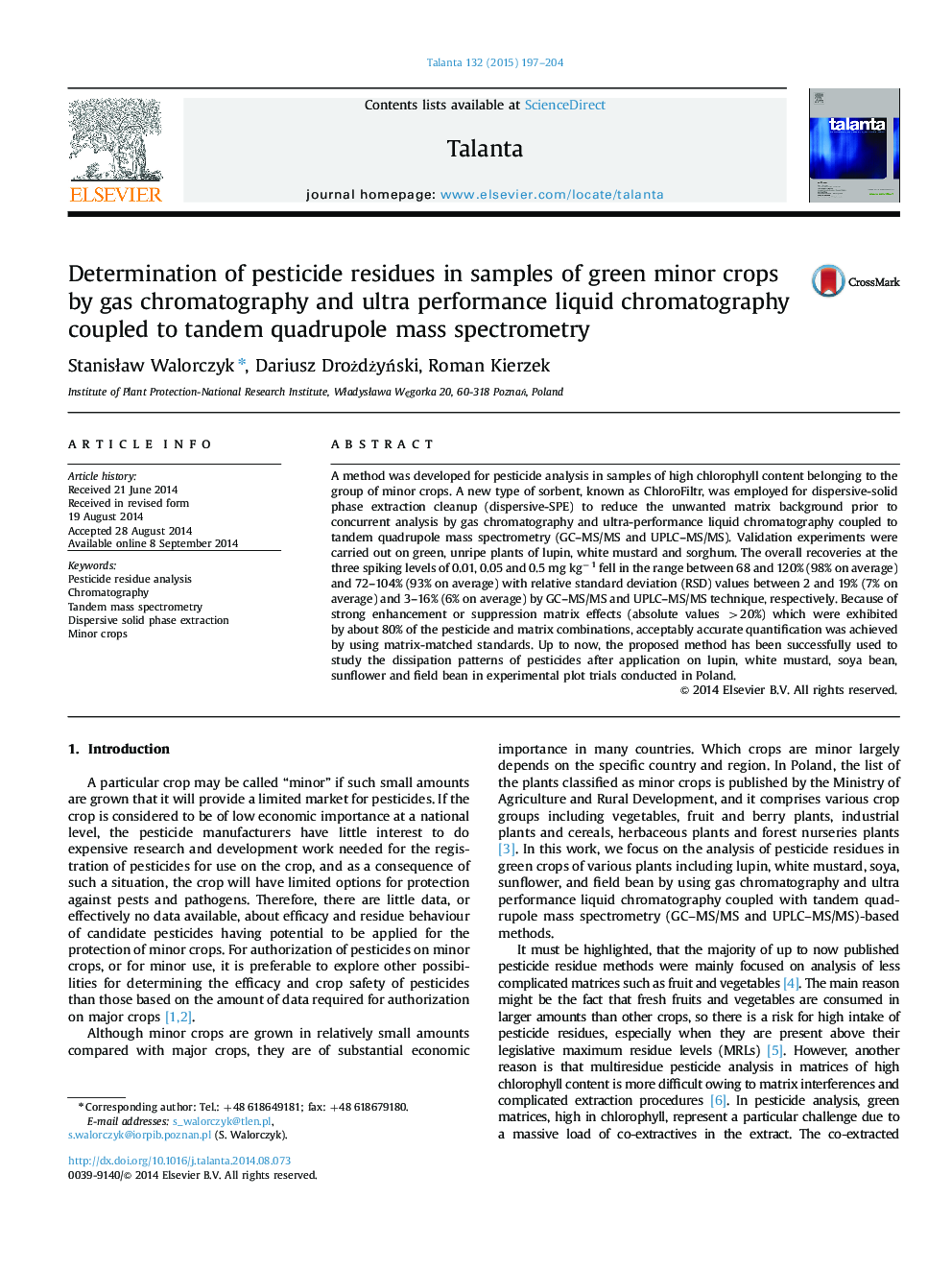| Article ID | Journal | Published Year | Pages | File Type |
|---|---|---|---|---|
| 1242007 | Talanta | 2015 | 8 Pages |
•GC–MS/MS and UPLC–MS/MS methods for pesticide analysis in minor crops were established.•A new ChloroFiltr sorbent was evaluated for dispersive-SPE cleanup of green extracts.•The method validation demonstrated satisfactory analytical performance data.•The method was successfully applied for analysis of samples from experimental plots.
A method was developed for pesticide analysis in samples of high chlorophyll content belonging to the group of minor crops. A new type of sorbent, known as ChloroFiltr, was employed for dispersive-solid phase extraction cleanup (dispersive-SPE) to reduce the unwanted matrix background prior to concurrent analysis by gas chromatography and ultra-performance liquid chromatography coupled to tandem quadrupole mass spectrometry (GC–MS/MS and UPLC–MS/MS). Validation experiments were carried out on green, unripe plants of lupin, white mustard and sorghum. The overall recoveries at the three spiking levels of 0.01, 0.05 and 0.5 mg kg−1 fell in the range between 68 and 120% (98% on average) and 72–104% (93% on average) with relative standard deviation (RSD) values between 2 and 19% (7% on average) and 3–16% (6% on average) by GC–MS/MS and UPLC–MS/MS technique, respectively. Because of strong enhancement or suppression matrix effects (absolute values >20%) which were exhibited by about 80% of the pesticide and matrix combinations, acceptably accurate quantification was achieved by using matrix-matched standards. Up to now, the proposed method has been successfully used to study the dissipation patterns of pesticides after application on lupin, white mustard, soya bean, sunflower and field bean in experimental plot trials conducted in Poland.
Graphical abstractFigure optionsDownload full-size imageDownload as PowerPoint slide
